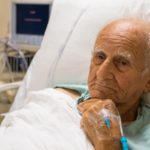
A randomized controlled trial comparing patient controlled versus physician controlled sedation in the Emergency Department.
Emergency Department patients are often sedated before undergoing painful procedures such as manipulation of fractures and dislocations. Propofol is a sedative drug commonly used for this purpose. Presently, the drug is always given by the doctor. However, there is evidence to suggest that the drug can be safely administered by the patient to him or herself. The patient does this by pressing a button on a pump which delivers the drug on demand in a controlled manner. This is called patient controlled sedation. There are potential benefits when the patient gives the sedative drug to him or herself including getting…
Principal Investigator:
A/Prof Anthony Bell
Amount Awarded: $25,247
Institution: Royal Brisbane & Women's Hospital
READ MORE
READ MORE

Optimisation of cardiac output in emergency patients through non invasive cardiac output monitoring in the acute resuscitation phase. What does it add?
Giving intravenous fluids is one of the most common treatments used for critically ill patients in the Emergency Department; however it is difficult to know exactly how much fluid to give; too much or too little can worsen survival. Doppler ultrasound is a test that can tell us how well the heart is working, and how it is responding to treatment. Ultrasound has been used in intensive care and in the operating theatre but there is not enough research available to know whether it is practical and useful in the emergency room and whether or not using it can improve…
Principal Investigator:
Dr Neil Grant
Amount Awarded: $300,000
Institution: The Prince Charles Hospital
READ MORE
READ MORE

Prospective evaluation of an innovative system for online clinical assessment of practical skills (eCAPS) for Emergency Medicine residents and registrars.
The current project will involve the implementation and evaluation of a pioneering protocol for the online clinical assessment of practical skills (eCAPS) for medical residents and registrars training in Emergency Medicine. It will use a variety of web-based video technologies to facilitate the learning and innovative assessment of physical examinations of the musculoskeletal system initially targeting the knee and shoulder joints. Specifically, eCAPS includes three interdependent elements with a progressive (asynchronous to synchronous) organization of online instructor and learner-generated video resources to allow formative and summative assessments of practical competencies of Emergency Medicine residents and registrars performing selected physical examinations…
Principal Investigator:
Dr Colin Meyers
Amount Awarded: $34,582.07
Institution: The Prince Charles Hospital
READ MORE
READ MORE

Pharmacokinetic Pharmacodynamics Understanding for Fentanyl Intra-Nasal for children in pain or during painful procedures: pilot study.
Fentanyl is a powerful morphine-like pain reliever. It may be given to children using a puffer (mucosal atomiser) device into the nose. This needle-free method of strong pain relief is gaining popularity in emergency departments. Intranasal fentanyl could also be used for painful procedures that currently receive very little pain relief. Examples include a meningitis test (lumbar puncture), urinary catheter for urine infections (urinary catheter), or placing a tube from nose to the stomach (nasogastric). Randomized controlled trials are required to confirm and quantify the benefit. These trials will also facilitate cost effectiveness analyses and add to safety data. Published…
Principal Investigator:
Dr David Herd
Amount Awarded: $44,241
Institution: Mater Children’s Hospital
READ MORE
READ MORE

End of Life Issues – Withdrawal of treatment/Decision to not treat in the Emergency Department: A prospective multi-centre study.
Not infrequently, doctors working in the Emergency Department (ED) have to decide on how they are to provide treatment to dying patients. Specifically, they have to decide whether to actively treat or whether they should limit or withdraw treatment on patients who are not anticipated to live. Such decisions should be governed by legislature as well as standards set by the Australian Council on Health Care Standards (ACHCS). However, research conducted in our hospital has indicated that doctors consider a wide variety of factors including patient’s and family’s wishes when making such end-of-life decisions. We therefore raise the following questions.…
Principal Investigator:
Dr Philip Richardson
Amount Awarded: $50,000
Institution: Royal Brisbane & Women's Hospital
READ MORE
READ MORE





